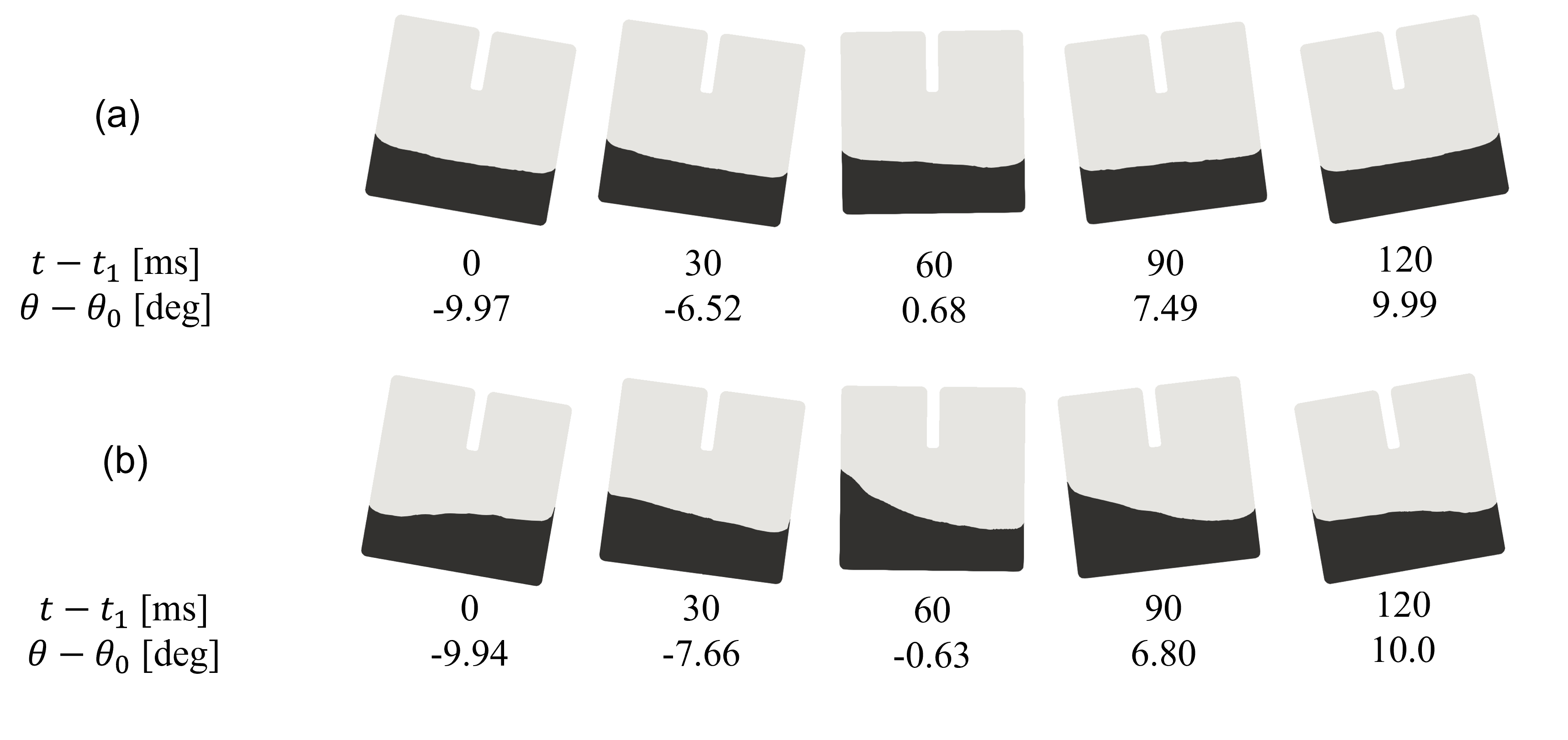Sloshing Phenomenon under Reduced Gravity
JAXA Supercomputer System Annual Report February 2024-January 2025
Report Number: R24EDG10103
Subject Category: Research and Development
- Responsible Representative: Masato Sakurai, Manager of ECLSS, Research Unit II, Aerospace RInsertHereD Directorate, JAXA
- Contact Information: Sakurai Masato(sakaurai.masato@jaxa.jp)
- Members: Hikono Furuichi, Motoharu Kusano, Masato Sakurai, Ichiro Ueno
Abstract
In December 2022, a series of experiments on liquid behavior in low gravity environments (LBPGE) simulated with CBEF were conducted on the ISS. The objective of this study is to elucidate sloshing phenomena in a small sealed vessel in order to accumulate knowledge on liquid behavior in a low gravity environment.
Reference URL
N/A
Reasons and benefits of using JAXA Supercomputer System
In discussing sloshing phenomena, it is necessary to reproduce complex interfacial behavior. Large-scale computational resources are essential to study these phenomena on Earth, and the use of JSS makes it possible to perform a huge number of calculations at high speed.
Achievements of the Year
We constructed a numerical model with the same dimensions as the small container used in the LBPGE experiment and worked to elucidate the effect of the liquid containment on the liquid behavior observed in the on-orbit experiment. The results are shown below. When the container was oscillated at the first-order resonance frequency in ground gravity, a resonance phenomenon occurred when the initial liquid level was 9.33 mm, but not when the initial liquid level was 7.34 mm. This indicates that the presence or absence of the resonance phenomenon when the container was oscillated at the resonant frequency depended on the initial liquid level in the container. (Fig. 1)

Fig.1: Liquid behavior at first-order resonant frequency (initial liquid level (a) 7.50 mm (b) 8.50 mm)
Publications
- Poster Presentations
Effect of initial liquid height on sloshing in closed vessel, JASMAC-36
On fluid behavior in gas-liquid two-phase flow in low gravity for manned space exploration, Ukaren68
Usage of JSS
Computational Information
- Process Parallelization Methods: MPI
- Thread Parallelization Methods: OpenMP
- Number of Processes: 144 - 324
- Elapsed Time per Case: 72 Hour(s)
JSS3 Resources Used
Fraction of Usage in Total Resources*1(%): 1.03
Details
Please refer to System Configuration of JSS3 for the system configuration and major specifications of JSS3.
| System Name | CPU Resources Used(Core x Hours) | Fraction of Usage*2(%) |
|---|---|---|
| TOKI-SORA | 0.00 | 0.00 |
| TOKI-ST | 8964300.65 | 9.20 |
| TOKI-GP | 0.00 | 0.00 |
| TOKI-XM | 0.00 | 0.00 |
| TOKI-LM | 519.98 | 0.04 |
| TOKI-TST | 0.00 | 0.00 |
| TOKI-TGP | 0.00 | 0.00 |
| TOKI-TLM | 0.00 | 0.00 |
| File System Name | Storage Assigned(GiB) | Fraction of Usage*2(%) |
|---|---|---|
| /home | 245.00 | 0.17 |
| /data and /data2 | 201915.00 | 0.97 |
| /ssd | 7530.00 | 0.40 |
| Archiver Name | Storage Used(TiB) | Fraction of Usage*2(%) |
|---|---|---|
| J-SPACE | 2.73 | 0.01 |
*1: Fraction of Usage in Total Resources: Weighted average of three resource types (Computing, File System, and Archiver).
*2: Fraction of Usage:Percentage of usage relative to each resource used in one year.
ISV Software Licenses Used
| ISV Software Licenses Used(Hours) | Fraction of Usage*2(%) | |
|---|---|---|
| ISV Software Licenses(Total) | 1.35 | 0.00 |
*2: Fraction of Usage:Percentage of usage relative to each resource used in one year.
JAXA Supercomputer System Annual Report February 2024-January 2025


